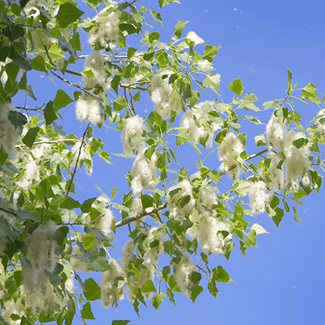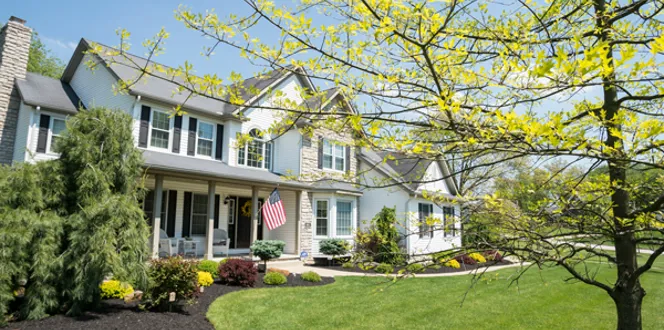Ah, spring. The time to stroll through your garden, checking out the new colors and smells and sights.
Then … ahh….choo! Your allergies start acting up. You just want to get outside in the warmer weather without all the sniffling and sneezing and watery eyes. We understand.
Let’s start with a look at the trees in your own landscape. Did you know there are trees you can plant that won’t irritate your allergies as much as others? We got your back.
Take a look at these best low pollen trees and find some relief so you can enjoy the outdoors again.
Types of Tree Allergies
Approximately 30 percent of U.S. adults have allergies, amounting to more than 50 million Americans, according to WebMD.
So you’re not alone in your fight for a sneeze-free spring.
Looking at the different types of tree allergies and the symptoms they cause can help you better understand what trees are best to plant.
Tree pollen allergies are commonly called hay fever allergies. The pollen released by trees, grasses, and weeds enters your body and, if you have allergies, your immune system identifies it as an intruder, causing your symptoms. You can be more allergic to grass or weed pollen than tree pollen or vice-versa.
In addition to red, watery, and swollen eyes; a runny, stuffy nose; itchy eyes, nose, and ears; and sneezing, some people also have asthma symptoms that can erupt when trees are pollinating.
Some tree pollens are dry and lightweight so the wind can push them to travel great distances.
Best Trees for Allergies
If you want to leave the tissues and nasal spray inside while you’re enjoying your backyard, consider planting these trees to combat allergies.
 Crape myrtle - Attractive bark, lush foliage, bright flowers - this tree can be enjoyed all year long.
Crape myrtle - Attractive bark, lush foliage, bright flowers - this tree can be enjoyed all year long.- Flowering crabapple - This tree will give you fragrant blossoms that don’t cause itchy, watery eyes, and also provides berries that draw birds.
- Flowering plum - To add a rich shade of purple to your yard without allergy worries, try this ornamental tree.
- Dogwood - One of the most popular flowering trees, dogwoods produce white or pink flowers in spring and have vibrant scarlet fall foliage. What’s not to love?
- Magnolia - This tree produces gorgeous spring flowers and brings an intoxicating aroma that won’t make you sneeze. Sign us up!
- Tulip - This tree is a fast grower and offers shade, as well as brilliant yellow leaves in autumn.
One big trick to consider: Choose female trees over male trees because while female trees drop berries or seeds, they don’t produce pollen like their male counterparts.
Trees That Cause Allergies
Many plants release their pollen into the air annually, but only a small number cause the sneezing, itching, and watery eyes that signify allergies.
In fact, some types of tree pollen can cause more allergy problems than others.
The worst trees for allergies are:
- Ash
 Birch
Birch- Boxelder
- Cedar
- Cottonwood
- Elm
- Hawthorn
- Maple
- Oak
- Pine
- Sycamore
- Walnut
- Willow
As a general rule, try to avoid wind-pollinated trees or male trees. Instead, choose female trees or insect-pollinated trees that release far less pollen into the air.
Why Do Trees Have Pollen?
As you’re blowing your nose … again … you may be wondering why trees produce pollen in the first place.
Pollen is a super fine powder that trees, flowers, grasses, and weeds produce for the purpose of fertilizing other plants of the same species to continue producing their kind.
Yep, pollen is basically plant sperm. Gross … but true.
Do Trees Release Pollen at Night?
Higher pollen concentrations are usually associated with sunny, warm, daylight hours.
Grasses and trees typically release their pollen at sunrise, with levels peaking in late morning and early afternoon. Think of pollen being the highest on warm, dry days with mild winds.
Cooler, nights are actually considered to be the times with lower allergy risks.
How Long Does Pollen Fall From Trees?
If you’re allergic to tree pollen, you’re likely wondering how long you have to cope. In other words, how long does pollen fall from trees in the first place?
Depending on your location, pollen can begin falling from trees as early as February. This process can last through May. April and May are typically the months that bring the highest concentrations of pollen.









